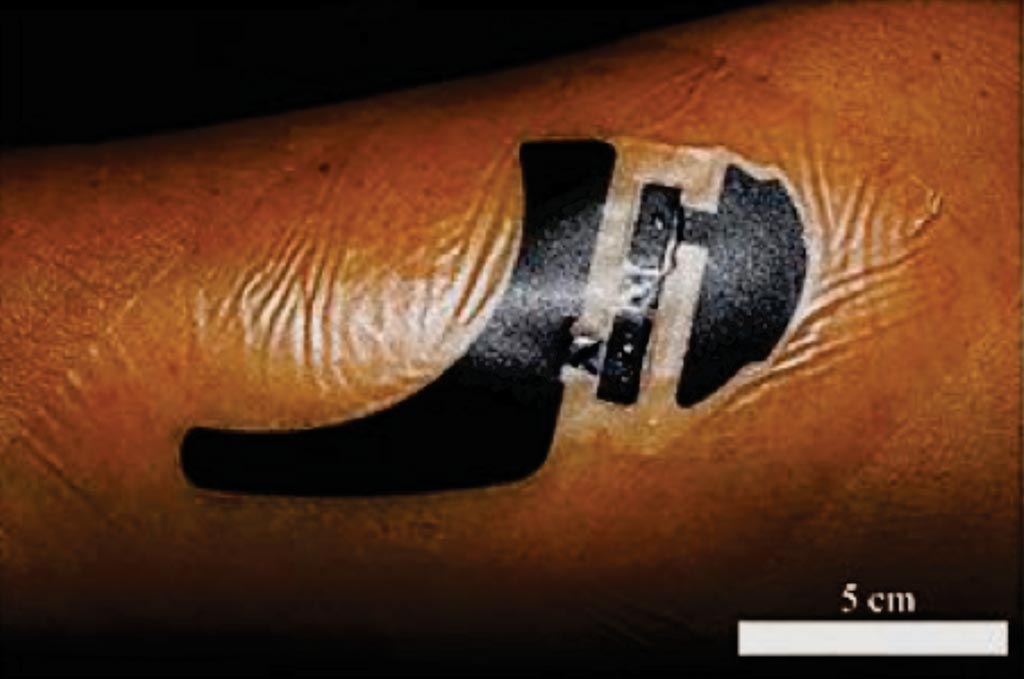Biosensor System Developed for Blood Glucose Monitoring
By LabMedica International staff writers
Posted on 11 Jan 2018
Currently, noninvasive glucose monitoring is not widely appreciated because of its uncertain measurement, accuracy, weak blood glucose correlation and inability to detect hyperglycemia/hypoglycemia during sleep.Posted on 11 Jan 2018
Regulated and continuous glucose monitoring (CGM) of diabetes patients can provide better monitoring and control of blood glucose and prevent complications and glucose monitoring with commercially available products relies on invasive lancet approaches.

Image: The skin-like biosensor system developed for noninvasive blood glucose monitoring (Photo courtesy of Tsinghua University).
Scientists at the Tsinghua University (Beijing, China) fabricated a skin-like biosensor system for noninvasive, in situ, and highly accurate intravascular blood glucose monitoring. The system integrates an ultrathin skin-like biosensor with paper battery–powered electrochemical twin channels (ETCs). The designed subcutaneous ETCs drive intravascular blood glucose out of the vessel and transport it to the skin surface.
The ultrathin (~3 μm) nanostructured biosensor, with high sensitivity (130.4 μA/mM), fully absorbs and measures the glucose, owing to its extreme conformability. The ultrathin skin-like biosensors completely conform to the skin and measure the outward-transported glucose driven by ETCs. These biosensors are multilayered with “sand dune” nanostructures, which exhibit better electrochemical properties and higher sensitivity.
The team conducted in vivo human clinical trials. Invasive glucose measurement was done using a commercial glucometer and vein-detained needles. The skin-like noninvasive blood glucose monitoring system measured the intravascular blood glucose and the glucose in interstitial fluid (ISF). The ETCs greatly improve the correlation between the noninvasive measurement results and the real blood glucose level. With proper calibration, the system is potentially suitable for medical-grade CGM and insulin therapy when working with micro-insulin pumps. The study was published on December 1, 2017, in the journal Science Advances.
Related Links:
Tsinghua University








 (3) (1).png)




